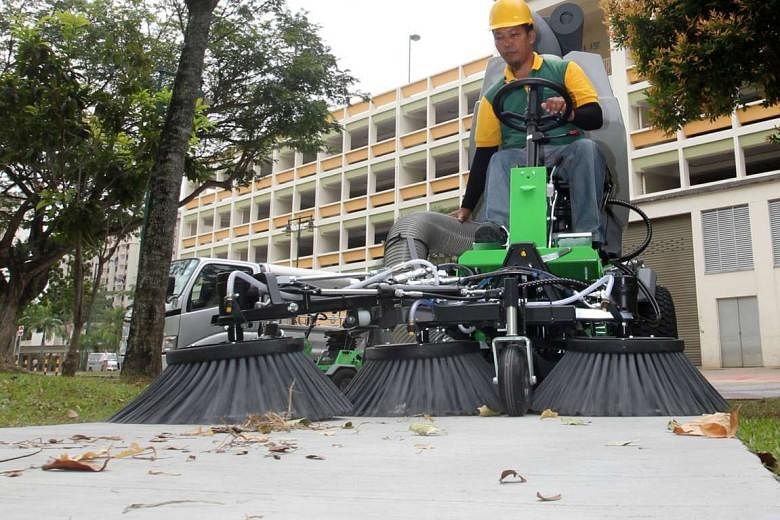You could soon see driverless vehicles cleaning the roads and clearing your rubbish, in what could be a world-first application of such technology.
The National Environment Agency (NEA) and the Ministry of Transport (MOT) issued a request for information (RFI) for the design and development of such vehicles yesterday. The closing date for submissions is Dec 28.
The multi-purpose utility vehicles (MPUV) should be able to autonomously clean pavements and roads, as well as collect and dispose of stored litter.
Expected to operate between 10pm and 5am, they should be quiet, generating noise of less than 50 decibels, and be able to be monitored either remotely or on-site.
They should have a top speed of 25kmh and be able to vacuum, sweep and brush around tree roots, uneven surfaces and broken tiles.
The agencies are also looking at the optional development of vehicles that can collect rubbish from bins at private housing estates, and dispose of it at sites up to 100km away. It noted that the cleaning and refuse collection functions could be combined.
One-north - currently a test bed for driverless vehicles - and its surrounding commercial and residential areas was proposed as a test area for the cleaning vehicles.
"Proposers may also propose alternative sites for testing and deployment of the MPUV with relevant justifications and considerations," said the document.
-
SPECS FOR NEW DESIGN
-
Able to autonomously clean pavements and roads, and collect and dispose of stored litter.
Generate noise of less than 50 decibels.
Can be monitored either remotely or on-site.
Top speed of 25kmh.
Can vacuum, sweep and brush around tree roots, uneven surfaces and broken tiles
The Seletar Hills private estate was offered as a test area for refuse-collecting vehicles.
"Through this RFI, we hope to seek information from the industry, institutes of higher learning and research institutes on how we could leverage new technology to improve the productivity of public cleaning," said the NEA and the MOT in a media release yesterday.
The two agencies noted that the use of the technology was in line with the vision laid out by the Committee of Autonomous Road Transport (Carts). Carts was formed by the Government in 2014 to chart the direction for self-driving technology, including their use for mass transportation and freight delivery.
Last year, MOT began collaborating with port operator PSA to develop autonomous truck platooning technology for transporting cargo between port terminals.
Robotics expert Marcelo Ang said the introduction of such cleaning vehicles could simply be a matter of converting existing equipment into driverless units.
Said the acting director of the Advanced Robotics Centre at the National University of Singapore: "They would use the same algorithms as driverless cars."
He added that such vehicles should be able to go around uneven surfaces, as driverless vehicles are already able to negotiate obstacles.


